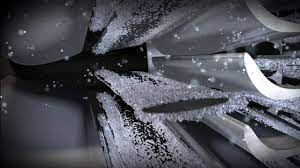NASA Researches Atmospheric Ice Crystal Formation That Is Dangerous to Aircraft


NASA is using its DC-8 flying laboratory to research the creation of ice crystals at high altitudes with the goal of improving aircraft jet engine designs and enhancing aviation safety. The research project is a component of NASA’s High Ice Water Content (HIWC) program. For the purpose of better understanding how ice crystals impact aircraft engine performance, the study team recently conducted a flight campaign that involved flying through the center of intense thunderstorms. In the month of July, they flew close to the southeast shores of the United States and the Gulf of Mexico.
In the past, NASA has also carried out similar research programs. But this time, the researchers’ attention was drawn to aerosols produced by humans. “We’re doing something a little new for this campaign. To better understand the impact that human-made aerosols have on the formation of dense concentrations of ice crystals, our first objective is to undertake flights in those regions, according to Thomas Ratvasky, the HIWC’s chief investigator from NASA’s Glenn Research Center in Cleveland.
Aerosols can develop from both natural and artificial sources. Some sources of aerosols include industrial emissions, the burning of fossil fuels, and agricultural activity. Aerosols have the potential to travel over the ocean after being released into the sky. It has been proposed that aerosols may increase the quantity of ice crystals in thunderstorms because they have a tendency to interact with connective systems.
The performance and power of the jet engines are hampered, which puts the aircraft that are traveling through thunderstorms in danger. They may also have an impact on the aircraft’s instruments, causing inaccurate and erroneous readings.
Thus, scientists are interested in studying aerosols and gathering additional information that will be useful in raising the bar for aviation safety.
“We want to guarantee that this dataset adequately represents high-aerosol conditions. Many of the engines in use today are not needed to demonstrate their capacity to fly in these ice crystal circumstances, but Ratvasky indicated that future engines will.